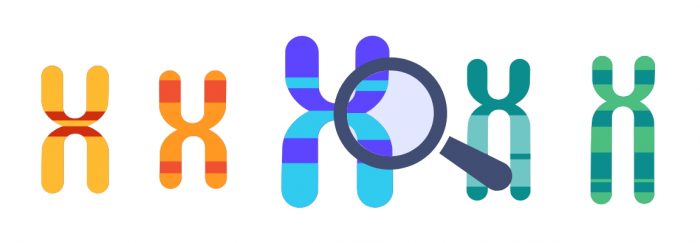In recent years, advances in the field of genetics are revolutionizing our knowledge of many aspects of medicine.
The development of powerful computational techniques and improvements in laboratory procedures have made it possible to obtain important new information about the origin and behavior of the most common complex diseases, such as Alzheimer’s disease, Parkinson’s disease, diabetes and various types of cancer, among others. All this health information can be accessed through DNA testing.
Complex diseases are multifactorial in origin and their development is influenced by both genetic and environmental factors. Therefore, knowing our genetic predisposition to a certain disease can help us to modify our habits and adapt our lifestyle according to our genetics.
But how does it all start?

Sample processing
The user receives the DNA test kit, and then takes the sample by depositing the saliva in the corresponding tube. This is sent to the laboratory where it will be analyzed.
The saliva sample arrives at the laboratory, which complies with the strict ISO 90001:2015 standards of the European Union. Once there, the DNA is extracted, quantified, amplified with PCR techniques and finally genotyped.
This last step uses Illumina® iScan technology and the most up-to-date version of the Infinium Global Screening Array (GSA) genotyping chip, which consists of some 650,000 genetic markers distributed throughout the genome, to which some 100,000 more markers have been added on a personalized basis. The reliability of this technology is greater than 99% and contains internal markers that are used as quality control.
Results Analysis
Once the sample has been genotyped, the raw results are transferred to our database and analyzed by our team of bioinformaticians and geneticists. Interpretation of the results is performed by combining the most recent published scientific genetic information and computational power, including Big Data. Thanks to several updates and the development and fine-tuning of the predictive genetics through the imputation technique, we have managed to increase the number of analyzable genetic variants from about 750,000 to tens of millions, allowing much more comprehensive studies.
Big Data and genetics
Genetic predisposition is determined by the presence of certain variants in the genome, which can be studied by powerful computational and bioinformatics technologies through Big Data genetic studies.
Genome-wide association studies (GWAS), which have developed significantly in recent years, are providing an increasingly better understanding of the relationship between genetics and the development of multiple complex diseases, and can be used to determine the genetic risk of suffering from them. In these studies, thousands of individuals diagnosed with a given disease (cases) are compared with thousands of individuals who do not suffer from it (controls), making it possible to identify risk genetic variants (those found more frequently in the group of cases) and protective genetic variants (those found more frequently in the group of controls).
In recent years, thanks to improvements in whole genome sequencing technologies, population reference panels have been created. These are large databases containing the complete genetic information of hundreds of thousands of individuals.
With all this information, we analyze the presence or absence of these risk or protective variants, and by means of a bioinformatics analysis based on a polygenic risk score, we estimate a risk value or genetic probability of suffering from a disease or trait.
The application of this powerful and novel methodology has allowed us to reshape the estimation of genetic risk for complex diseases, providing much more accurate and up-to-date results as new discoveries in genetic technology and research are published.
In summary, knowing the genetic risk of a given disease through the imputation method and the latest GWAS studies can help us make decisions and modify our habits and lifestyle, which can be an important preventive tool for many well-known complex diseases.



